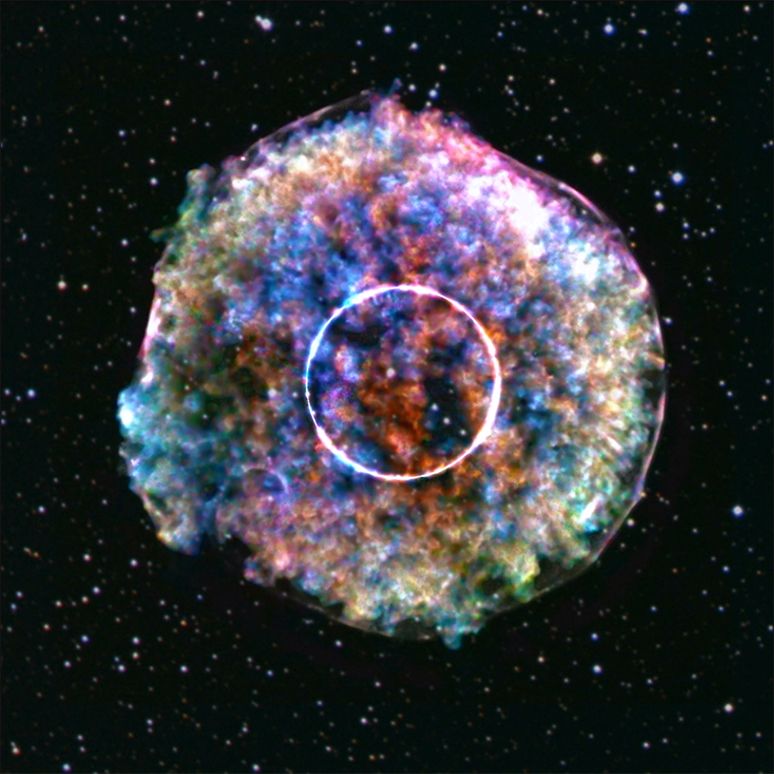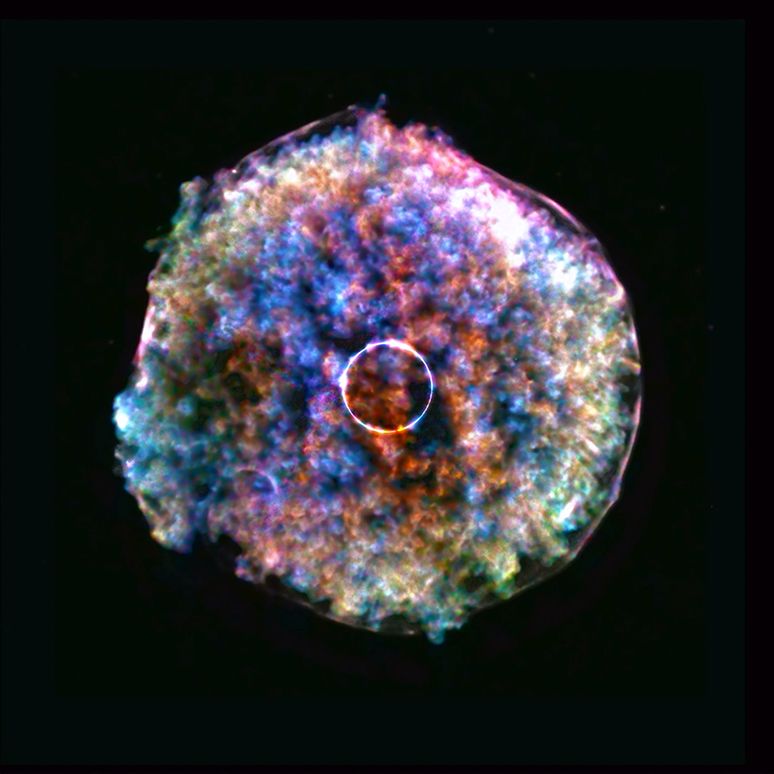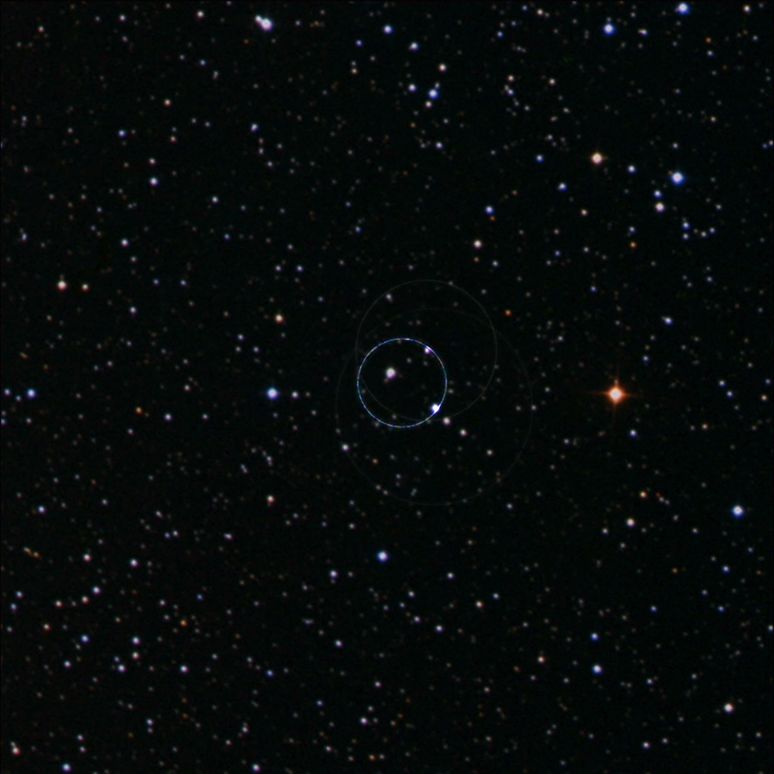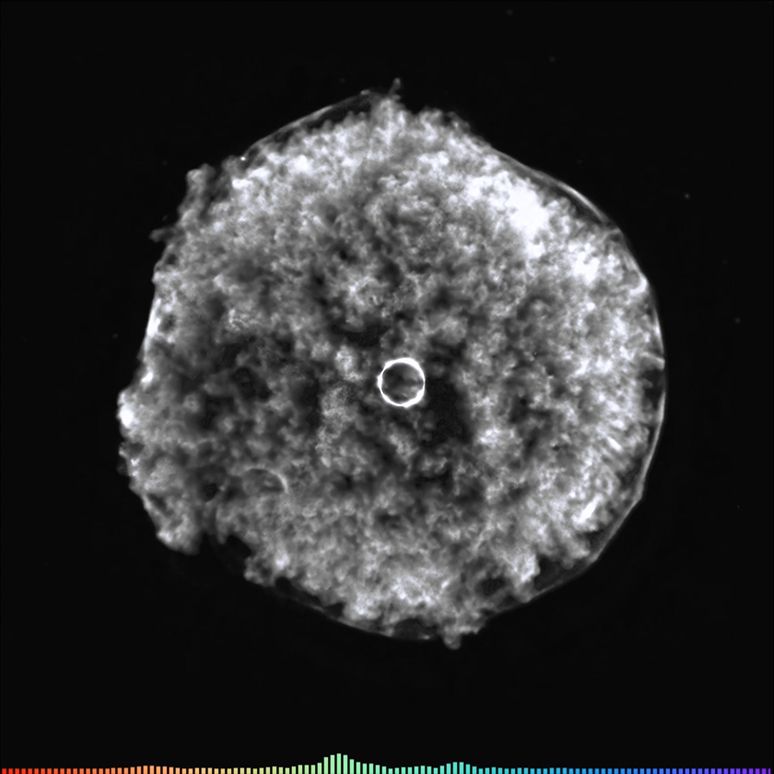
Tycho Sonification
Beginning in the center, the sonification of the Tycho supernova remnant expands outward in a circle. The image contains X-ray data from Chandra where the various colors represent small bands of frequency that are associated with different elements that are moving both toward and away from Earth. For example, red shows iron, green is silicon, and blue represents sulfur. The sonification aligns with those colors as the redder light produces the lowest notes and blue and violet create the higher-pitched notes. Color varies over the remnant, but the lowest and highest notes (red and blue) dominate near the center and are joined by other colors (mid-range notes) towards the edge of the remnant. White corresponds to the full range of frequencies of light observable by Chandra, which is strongest toward the edge of the remnant. This light is converted to sound in a more direct way as well, by interpreting frequencies of light as frequencies of sound and then shifting them lower by 50 octaves so that they fall within the human hearing range. The different proportions of iron, silicon, and sulfur across the remnant can be heard in the changing amounts of the low-, mid-, and high-frequency peaks in the sound. The field of stars in the image as observed by Hubble is played as notes on a harp with the pitch determined by their color.
Access more information & file formats on this sonification
The Chandra sonifications were led by the Chandra X-ray Center (CXC), with input from NASA's Universe of Learning. The sustained collaboration was driven by visualization scientist Dr. Kimberly Arcand (CXC), astrophysicist Dr. Matt Russo and musician Andrew Santaguida (both of the SYSTEM Sounds project). For other sonifications, please see their linked pages.
cxcpub@cfa.harvard.edu
617-496-7941
60 Garden Street,
Cambridge, MA 02138 USA
Art Direction/Design: Kristin DiVona
Web Developers: Khajag Mgrdichian
& Kelly T.S. Williamson
Chandra X-ray Center, Operated for NASA by the Smithsonian Astrophysical Observatory. This site was developed with funding from NASA under contract NAS8-03060 | Privacy | Accessibility
Additional support from NASA's Universe of Learning (UoL). UoL materials are based upon work supported by NASA under award number NNX16AC65A to the Space
Telescope Science Institute, working in partnership with Caltech/IPAC, Jet Propulsion Laboratory, and Smithsonian Astrophysical Observatory.




